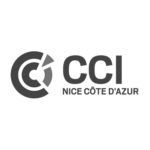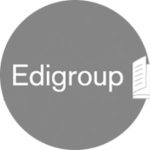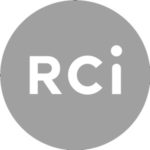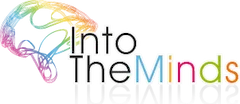Quantitative research is a generic term that covers various market research techniques. It aims to test hypotheses and provides precise figures to feed a financial plan or a business plan. In other words, quantitative research is the essential step that allows assessing the profitability of a project. There are several quantitative methods. All are offered by our market research firm.
Contact us for your quantitative study
Quantitative research: Our Services at a Glance
- Covered territories : worldwide
- Techniques used: online surveys, panel surveys, telephone surveys, Big Data analysis, and predictive modeling
- Budget : from 4000€ excluding VAT
- Duration of the study : from 4 weeks
- Deliverables : anonymized data, analysis, presentation of results, recommendations
- Quote : within 48 hours (immediate approximate budget by contacting us by phone)
The 4 Types of Quantitative Studies Offered by IntoTheMinds
As a market research firm, IntoTheMinds can combine several approaches to answer the client’s questions. In the quantitative field, we mainly use 4 types of analyses.
Online Surveys
Online surveys are also known under the acronym CAWI. They consist of questioning people via computer, generally by distributing a link.
Online surveys are the method of choice for conducting satisfaction surveys or for questioning customers about aspects related to their needs. They can also be used to question non-customers:
- via a convenience sample
- via a controlled sample such as a panel (see next paragraph)
Panel Surveys
Panel surveys are a variant of online surveys. They allow questioning a specific sample, representative of the target population.
In B2C, the sample is most often representative in terms of country, age group, and gender. In B2B, representativeness is sought according to the country, sector of activity, and the respondent’s role.
IntoTheMinds has very extensive proprietary panels to carry out all possible projects in B2C as well as in B2Bbrand awareness studies, especially those.
Telephone Surveys
Telephone surveys follow a methodological approach called CATI. We opt for this type of quantitative survey when we do not have enough panelists. The CATI approach is also preferred when the client wishes to simultaneously carry out a commercial operation. The collection of quantitative information by phone is then coupled with a request for consent for subsequent commercial contact.
Statistical Analyses (Big Data, Predictive Modeling)
The last type of analysis concerns statistical analyses based on Big Data. The activity of your clients and prospects translates into digital traces that inform us about their behavior. IntoTheMinds offers analysis and predictive modeling services.
We analyze data using business intelligence software such as Power BI or Tableau. The visualizations created with these two software solutions help to better understand the reality of the data.
Modeling is an additional step in data analysis. It aims to infer the factors influencing customer behavior.

Beatrice Böhm, Marketing & Communication Manager, Reverse.
“IntoTheMinds conducted several missions for Reverse. After a qualitative study on the French market, they then carried out two B2B quantitative studies on the HR practices of French companies. The IntoTheMinds team was of great help and provided the results and recommendations quickly and for a very competitive budget.
We are very satisfied with our collaboration with IntoTheMinds and highly recommend their services”.
Examples of quantitative research projects
 Chamber of Commerce and Industry (CCI) of Nice Côte d’Azur (France): we conducted a quantitative research on the digitalization of training organizations for the CCI. This project was carried out using a CATI approach during the Covid crisis. The objective was to understand the effects of the crisis on the acceleration of training digitalization.
Chamber of Commerce and Industry (CCI) of Nice Côte d’Azur (France): we conducted a quantitative research on the digitalization of training organizations for the CCI. This project was carried out using a CATI approach during the Covid crisis. The objective was to understand the effects of the crisis on the acceleration of training digitalization.
The use of telephone surveys allowed us to collect about 150 complete responses with an average LOI (“Length of Interview”) of 20 minutes.

Edigroup (Switzerland, Belgium): the publishing company Edigroup is based in Switzerland and Belgium. They entrusted us with conducting an online satisfaction survey (CAWI) among all its Swiss and Belgian subscribers.
 MintT.care (Belgium): IntoTheMinds conducted a quantitative CATI (telephone survey) study for MintT.care. This study was carried out in France among nursing homes to prepare the company’s expansion into this market.
MintT.care (Belgium): IntoTheMinds conducted a quantitative CATI (telephone survey) study for MintT.care. This study was carried out in France among nursing homes to prepare the company’s expansion into this market.
 RCI Bank & Services (France): RCI is the bank of the automotive manufacturer Renault. We were commissioned to study the churn of the bank’s customers and predict which variables influenced their behavior. Several predictive models were developed based on socio-demographic data contained in the customer file, as well as transactional data and open data. In this way, we were able to explain 69.5% of customer behavior.
RCI Bank & Services (France): RCI is the bank of the automotive manufacturer Renault. We were commissioned to study the churn of the bank’s customers and predict which variables influenced their behavior. Several predictive models were developed based on socio-demographic data contained in the customer file, as well as transactional data and open data. In this way, we were able to explain 69.5% of customer behavior.

Marion Perillat, Marketing Project Manager, Edigroup (Lausanne, Switzerland)
“IntoTheMinds effectively supported us in our customer satisfaction project. IntoTheMinds took into account our constraints while defending the level of quality necessary to respond to market realities. At each phase of our project, they reminded us of the fundamental criteria for a customer study: precision, representativeness, and efficiency.
I highly recommend IntoTheMinds’ services for your future projects.”
Why Conduct a Quantitative Study?
A quantitative study allows you to provide a statistical guarantee to your results. Thanks to larger sample sizes than in qualitative studies, the results are more reliable.
A quantitative study must be considered when you wish to:
- launch a new product or service
- expand your activities to a new geographical territory
- measure your customers’ satisfaction
- measure your notoriety
Contact our firm for your quantitative study
Advantages and Disadvantages of Quantitative Study
Advantages
- Representativeness of results: a quantitative study is more representative than a qualitative study because more people are interviewed. Provided that statistical prescriptions are respected, the results can therefore be extrapolated.
- Speed: generally, results are obtained more quickly than with a qualitative study. This is especially true for panel surveys (see our CAWI page).
Disadvantages
- Types of questions: to obtain quantifiable responses, you need to ask precise questions (closed questions using, for example, a Likert scale).
- Depth of the survey: complex issues are difficult to break down into simple questions. You may need to multiply questions to pinpoint your problem, while keeping in mind that too many questions can decrease attention and the quality of responses.
Quantitative Study Generally Follows Qualitative Study
In the context of a market study, a quantitative study should be seen as an extension of the qualitative study. The two approaches are not opposed. They complement each other. The qualitative study is there to approach a subject in depth. The quantitative study is used to verify hypotheses and provide precise figures. These are necessary to ensure the sustainability of a project.
For this reason, we often suggest to our clients to combine the 2 methods to obtain better results.
Contact IntoTheMinds for your quantitative study project

 +33 1 88 32 73 44
+33 1 88 32 73 44 +32 2 347 45 86
+32 2 347 45 86
